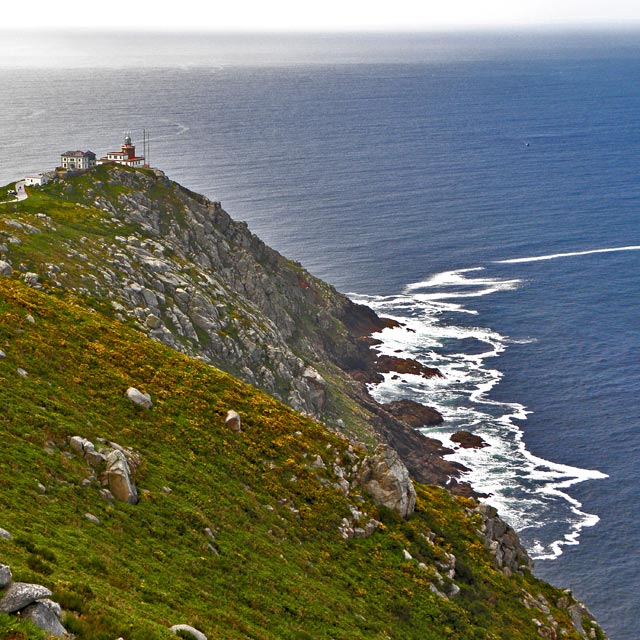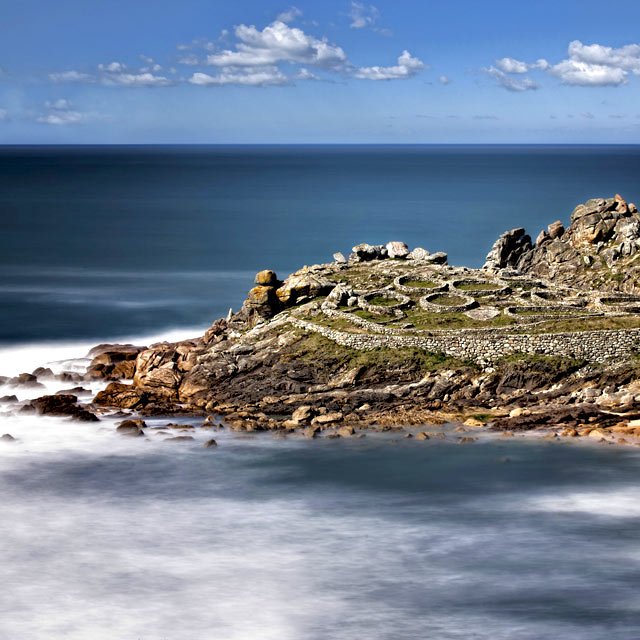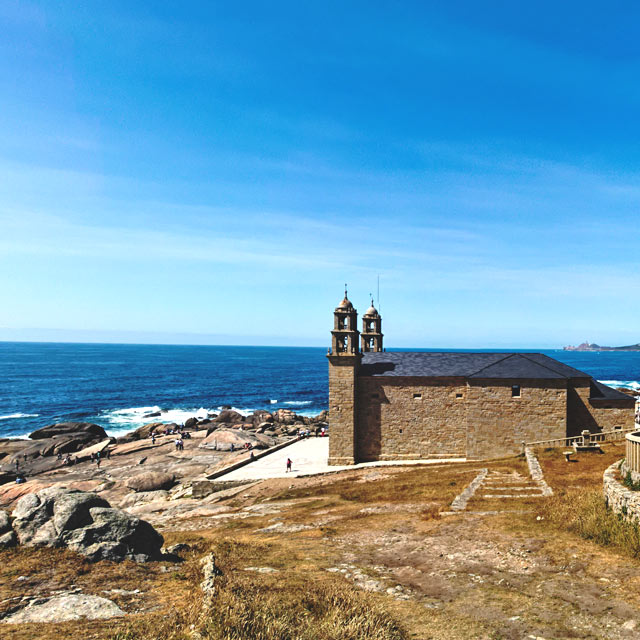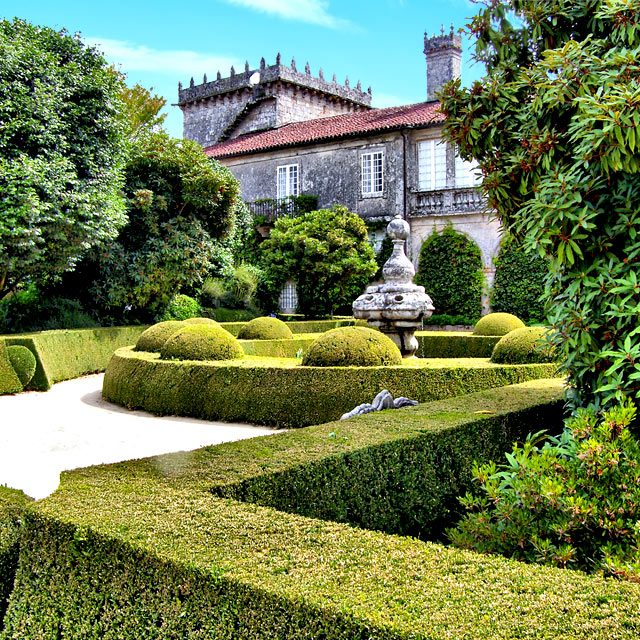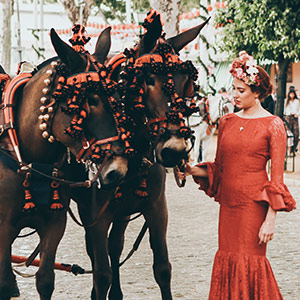End of the world
Cabo Fisterra is a unique site: one of the westernmost points of Europe, the scouts of the Roman Empire called it finis terrae, the end of the world. Every evening the sun sets behind these cliffs. Nowadays, this place still has a charm all its own, especially if you’re watching the sunset by its iconic lighthouse, looking at the rock called Centulo (devil), or spending a night in a picturesque hotel. First-row views of the end of the world.
Unmistakable hórreos
These stone or wood constructions were designed to store and protect the harvest, and are one of the symbols of Galicia. Once, every house would have one. However, some are particularly notable. For example, in A Merca (Ourense) there are 34, the largest group of hórreos in Galicia. If you go towards the sea, in the Pontevedra estuary there are the pretty stone hórreos of Combarro almost on the shore. A picture-postcard view.
